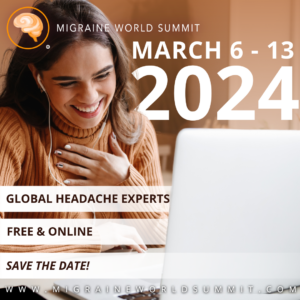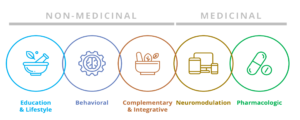Carl Cincinnato
Symptoms of hemiplegic migraine can be similar to those of classic migraine or migraine with aura. However, some patients and healthcare providers are surprised to learn that a hemiplegic migraine attack can actually mimic a stroke.
How can we understand and cope with migraine disease when many of us live with more than one variant of the disease?
What special challenges must we consider when we are juggling migraine alongside other health issues?
As Executive Director of the American Migraine Foundation, Nim Lalvani is a seasoned health care advocate working to advance our understanding of migraine and help patients find the resources they need. As a hemiplegic migraine warrior herself, Ms. Lalvani’s advocacy and public health experience are intertwined with her own health journey.
Is migraine a spectrum disease?
Nim Lalvani: “Migraine is truly a spectrum. You could spend one, two or 10 years of your life experiencing episodic migraine and then wake up one day with a debilitating attack. The next thing you know, you’re living with chronic migraine. But that doesn’t mean it always has to be that way; you could go back to being episodic, or you could waver between the two.”
How do you address the issues and concerns of people who have various types of migraine?
Nim Lalvani: “I think what unifies the community is the common experience, the fact that we’ve been living with this disease for so long. So much recognition has been given to other disease states or other neurological disorders, but not so much to the migraine experience. It’s not just about our individual experience; it’s all of us recognizing that together we can be relentless as migraine warriors. Together, we can address our experience as individuals while giving voice to the platform as a whole. That’s my goal with my experience living with migraine.
Hemiplegic migraine may not be that common, but I don’t see it as an isolating experience from a community perspective. I don’t see myself as different from someone who’s living with chronic migraine or episodic migraine. I see it as us all living with this disease. We haven’t been heard for long enough, and we can use that power to give voice to this community.”
When you have multiple health issues, as many in our community do, it presents a special set of challenges as you navigate your health.
What is it like to juggle multiple health conditions?
Nim Lalvani: “It’s not easy. I’ve been struggling with that since my university years. I struggled to finish my classes and get to my final exams because I was juggling debilitating migraine attacks plus pain associated with my polycystic kidney disease. Oftentimes I would end up in the hospital and miss my final exams, and I’d plead with my professors to let me take my exams so I wouldn’t have to retake the course.
I think the lesson learned is this: go at your own pace and learn what works for you and your support system. If you don’t have a support system, recognize that you have to figure out what makes sense for you. If you’re not able to follow what some people believe is the normal trajectory, that doesn’t make you inadequate, and it doesn’t make you abnormal. It just means that you’re course-correcting for your own experience. You’ll get there. Even if you don’t get to your desired goal, you can always readjust and set new goals.”
Watch the full interview to find out:
- What has Nim Lalvani’s personal journey with hemiplegic migraine been like, and how has it affected her life?
- How did she embark on health advocacy work, and what was her journey to migraine advocacy in particular?
- What is it like to support a community that has such varying degrees of migraine intensity?
- What are the telltale signs of a hemiplegic migraine attack?
- What is the difference between the two main types of hemiplegic migraine?
- What is the familial connection, and can genetic testing identify a certain type of hemiplegic migraine?
- Are there specific treatments for people with hemiplegic migraine?
- Is it common for people with hemiplegic migraine also to have one of the more common migraine types, as well?
- What advice would you give to someone who is living with a highly disabling or rarer form of migraine?
- What is the American Migraine Foundation (AMF)?
- What is AMF’s biggest challenge and its biggest opportunity?
Watch Nim Lalvani’s interview preview here, or order it as part of the Migraine World Summit package from this page.
If you previously purchased the 2019 Migraine World Summit, you are all set to login to watch the full interview.
Posted in: Migraine Education





